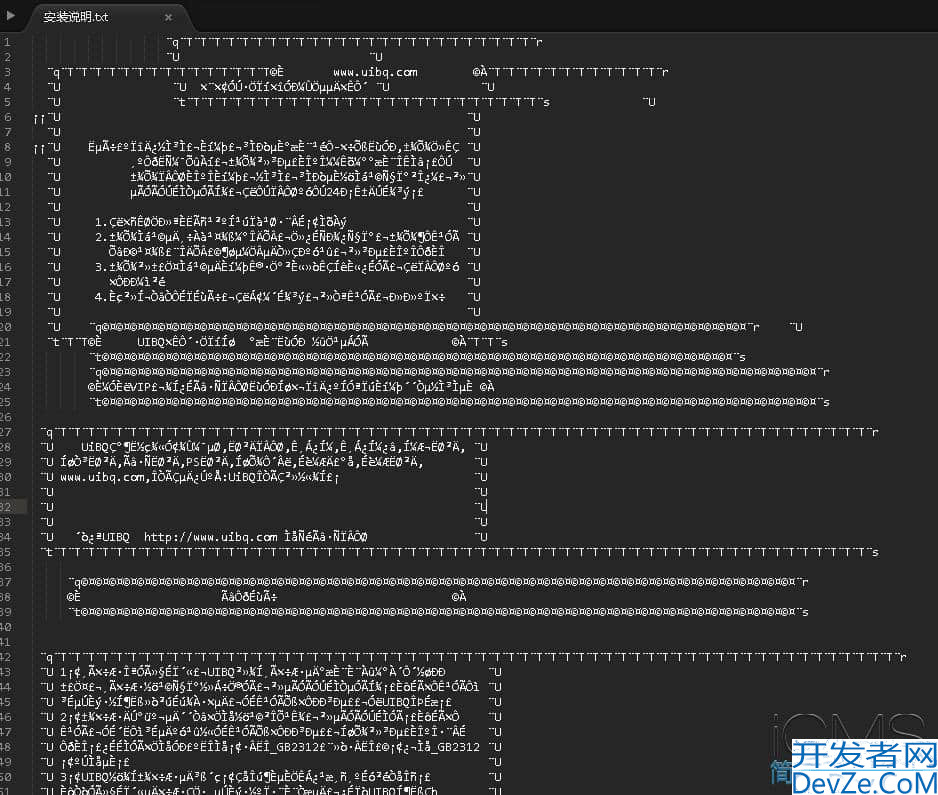使用Java实现通用树形结构构建工具类
目录
- 完整代码
- 一、设计思想与核心功能
- 二、核心实现原理
- 1. 数据结构准备阶段
- 2. 循环依赖检测算法
- 3. 树形结构构建
- 4. 搜索子树生成
- 三、关键代码详解
- 1. 节点排序实现
- 2. 异常处理机制
- 3. 函数式接口应用
- 四、使用示例
- 基础用法
- 搜索场景应用
- 五、注意事项
完整代码
package com.pig4cloud.pigx.common.core.util.tree;
import Java.util.*;
import java.util.function.Function;
import java.util.stream.Collectors;
/**
* 通用树结构构建工具类
*
* <p>重要说明:
* <ol>
* <li>所有节点必须具有唯一ID</li>
* <li>父节点不存在时自动成为根节点</li>
* <li>节点排序依赖comparator实现</li>
* <li>支持循环依赖检测和错误路径提示</li>
* </ol>
*
* @param <T> 原始数据类型
* @param <K> 节点ID类型(建议使用包装类型)
*/
public class TreeBuilder<T, K> {
private final Function<T, K> idGetter;
private final Function<T, K> parentIdGetter;
private final ChildSetter<T> childSetter;
private final Comparator<T> comparator;
/**
* 构造方法
*/
public TreeBuilder(Function<T, K> idGetter,
Function<T, K> parentIdGetter,
ChildSetter<T> childSetter,
Comparator<T> comparator) {
this.idGetter = Objects.requireNonNull(idGetter, "ID获取器不能为null");
this.parentIdGetter = Objects.requireNonNull(parentIdGetter, "父ID获取器不能为null");
this.childSetter = Objects.requireNonNull(childSetter, "子节点设置器不能为null");
this.comparator = Objects.requireNonNull(comparator, "排序比较器不能为null");
}
/**
* 构建完整树结构
*/
public List<T> buildTree(List<T> items) {
Objects.requireNonNull(items, "节点列表不能为null");
if (items.isEmpty()) return Collections.emptyList();
// 1. 构建数据索引
Map<K, T> nodeMap = createNodeMap(items);
Map<K, List<T>> parentChildrenMap = items.stream()
.collect(Collectors.groupingBy(
parentIdGetter,
LinkedHashMap::new, // 保持插入顺序
Collectors.toList()
));
// 2. 循环依赖检测
detectCyclicDependencies(items, nodeMap);
// 3. 构建树结构
编程客栈 nodeMap.forEach((nodeId, node) -> {
List<T> children = parentChildrenMap.getOrDefault(nodeId, Collections.emptyList())
.stream()
.sorted(comparator)
.collect(Collectors.toList());
childSetter.setChildren(node, Collections.unmodifiableList(children));
});
// 4. 获取根节点(parentId为null或不存在于nodeMap)
return items.stream()
.filter(item -> isRootNode(item, nodeMap))
.sorted(comparator)
.collect(Collectors.toList());
}
/**
* 判断是否为根节点(抽离方法提升可读性)
*/
private boolean isRootNode(T item, Map<K, T> nodeMap) {
K parentId = parentIdGetter.apply(item);
return parentId == null || !nodeMap.containsKey(parentId);
}
/**
* 构建搜索结果树
*/
public List<T> buildSearchTree(List<T> allItems, Set<K&SxKHNdwgt; matchIds) {
Objects.requireNonNull(allItems, "节点列表不能为null");
Objects.requireNonNull(matchIds, "匹配ID集合不能为null");
Set<K> relatedIds = findRelatedIds(allItems, matchIds);
List<T> relatedItems = allItems.stream()
.filter(item -> relatedIds.contains(idGetter.apply(item)))
.collect(Collectors.toList());
return buildTree(relatedItems);
}
/**
* 创建节点ID映射表(含重复检测)
*/
private Map<K, T> createNodeMap(List<T> items) {
Map<K, T> map = new LinkedHashMap<>(items.size());
for (T item : items) {
K id = idGetter.apply(item);
if (map.containsKey(id)) {
throw new IllegalArgumentException(String.format(
"发现重复节点ID: %s (冲突对象1: %s, 冲突对象2: %s)",
id, map.get(id), item));
}
map.put(id, item);
}
return map;
}
/**
* 循环依赖检测核心逻辑
*/
private void detectCyclicDependencies(List<T> items, Map<K, T> nodeMap) {
Set<K> verifiedNodes = new HashSet<>();
Map&编程lt;K, K> idToParentMap = items.stream()
.collect(Collectors.toMap(idGetter, parentIdGetter));
for (T item : items) {
K currentId = idGetter.apply(item);
if (verifiedNodes.contains(currentId)) continue;
Set<K> path = new LinkedHashSet<>();
K tracingId = currentId;
while (tracingId != null) {
if (!path.add(tracingId)) {
throw new CyclicDependencyException(buildCyclePath(path, tracingId));
}
// 短路已验证节点
if (verifiedNodes.contains(tracingId)) break;
K parentId = idToParentMap.get(tracingId);
if (parentId == null) break;
// 直接循环检测
if (parentId.equals(tracingId)) {
throw new CyclicDependencyException("直接循环依赖: " + tracingId);
}
tracingId = parentId;
}
verifiedNodes.addAll(path);
}
}
/**
* 构造循环路径描述
*/
private String buildCyclePath(Set<K> path, K duplicateId) {
List<K> pathList = new ArrayList<>(path);
int index = pathList.indexOf(duplicateId);
List<K> cycle = pathList.subList(index, pathList.size());
return "检测到循环依赖链: " + cycle.stream()
.map(Object::toString)
.collect(Collectors.joining(" → "));
}
/**
* 查找相关ID集合(匹配节点+路径节点)
*/
private Set<K> findRelatedIds(List<T> allItems, Set<K> matchIds) {
Map<K, K> idToParentMap = allItems.stream()
.collect(Collectors.toMap(idGetter, parentIdGetter));
return matchIds.stream()
.flatMap(id -> traceAncestors(id, idToParentMap).stream())
.collect(Collectors.toSet());
}
/**
* 追溯父节点链
*/
private Set<K> traceAncestors(K startId, Map<K, K> idToParentMap) {
Set<K> ancestors = new LinkedHashSet<>();
K currentId = startId;
android while (currentId != null && ancestors.add(currentId)) {
currentId = idToParentMap.get(currentId);
}
return ancestors;
}
/**
* 自定义循环依赖异常
*/
public static class CyclicDependencyException extends RuntimeException {
public CyclicDependencyException(String message) {
super(message);
}
}
/**
* 子节点设置接口
*/
@FunctionalInterface
public interface ChildSetter<T> {
void setChildren(T parent, List<T> children);
}
/* 快捷构造方法 */
public static <T, K> TreeBuilder<T, K> create(
Function<T, K> idGetter,
Function<T, K> parentIdGetter,
ChildSetter<T> childSetter,
Comparator<T> comparator) {
return new TreeBuilder<>(idGetter, parentIdGetter, childSetter, comparator);
}
public static <T, K extends Comparable<? super K>> TreeBuilder<T, K> createWithNaturalOrder(
Function<T, K> idGetter,
Function<T, K> parentIdGetter,
ChildSetter<T> childSetter) {
return new TreeBuilder<>(
idGetter,
parentIdGetter,
childSetter,
Comparator.comparing(idGetter, Comparator.nullsLast(Comparator.naturalOrder()))
);
}
}
一、设计思想与核心功能
本工具类采用泛型设计,可处理任意类型的节点数据,具备以下核心能力:
- 多类型支持:通过泛型参数T(数据类型)和K(ID类型),支持各种业务场景
- 自动化构建:自动识别根节点、建立父子关系
- 安全防护:内置循环依赖检测、重复ID校验
- 灵活扩展:支持自定义排序规则、子节点设置方式
- 高效查询:提供子树构建功能,适用于搜索场景
二、核心实现原理
1. 数据结构准备阶段
Map<K, T> nodeMap = createNodeMap(items);
Map<K, List<T>> parentChildrenMap = items.stream()
.collect(Collectors.groupingBy(...));
- 节点映射表:通过ID快速定位节点,验证ID唯一性
- 父子关系映射:预先生成父节点→子节点列表的关系字典
2. 循环依赖检测算法
采用路径追踪法,时间复杂度O(n):
Set<K> path = new LinkedHashSet<>();
while (tracingId != null) {
if (!path.add(tracingId)) {
throw new CyclicDependencyException(...);
}
// 追溯父节点链
}
可检测两种异常情况:
- 直接循环:父节点指向自身
- 间接循环:A→B→C→A型循环链
3. 树形结构构建
采用两阶段构建模式:
- 初始化所有节点的子节点列表
- 筛选根节点(父ID不存在或对应节点缺失)
4. 搜索子树生成
通过ID回溯算法构建有效路径:
Set<K> traceAncestors(K startId) {
// 向上追溯所有祖先节点
}
确保搜索结果的完整树形结构
三、关键代码详解
1. 节点排序实现
childSetter.setChildren(node,
children.stream()
.sorted(comparator)
.collect(Collectors.toList())
);
支持两种排序方式:
- 自然排序(createWithNaturalOrder)
- 自定义比较器(推荐业务相关排序)
2. 异常处理机制
自定义异常类型增强可读性:
public class CyclicDependencyException extends RuntimeException {
// 携带具体循环路径信息
}
提供明确的错误定位信息:
检测到循环依赖链: 1001 → 1002 → 1003 → 1001
3. 函数式接口应用
@FunctionalInterface
public interface ChildSetter<T> {
void setChildren(T parent, List<T> children);
}
使用时可通过Lambda表达式实现:
TreeBuilder<Department, Long> builder =
new TreeBuilder<>(..., (parent, children) -> parent.setChildDepts(children));
四、使用示例
基础用法
List<Menu> menus = getFromDB();
TreeBuilder<Menu, Integer> builder = TreeBuilder.create(
Menu::getId,
Menu::getParentId,
(parent, children) -> parent.setChildren(children),
Comparator.comparing(Menu::getSortOrder)
);
List<Menu> tree = builder.buildTree(menus);
搜索场景应用
Set<Integer> matchIds = searchService.findIds("关键");
List<Menu> resultTree = builder.buildSearchTree(allMenus, matchIds);
五、注意事项
- ID规范:
- 必须实现有效的hashCode()和equals()
- 推荐使用包装类型(避免Long与long的匹配问题)
- 对象状态:
- 原始数据对象应支持子节点集合设置
- 建议编程客栈使用不可变集合防止意外修改
- 特殊场景:
- 空集合处理返回emptyList()
- 允许游离节点(父节点不存在时成为根节点)
- 性能考量:
- 万级数据量建议分批处理
- 频繁构建时可缓存nodeMap
以上就是使用Java实现通用树形结构构建工具类的详细内容,更多关于Java构建树形结构的资料请关注编程客栈(www.devze.com)其它相关文章!







 加载中,请稍侯......
加载中,请稍侯......
精彩评论